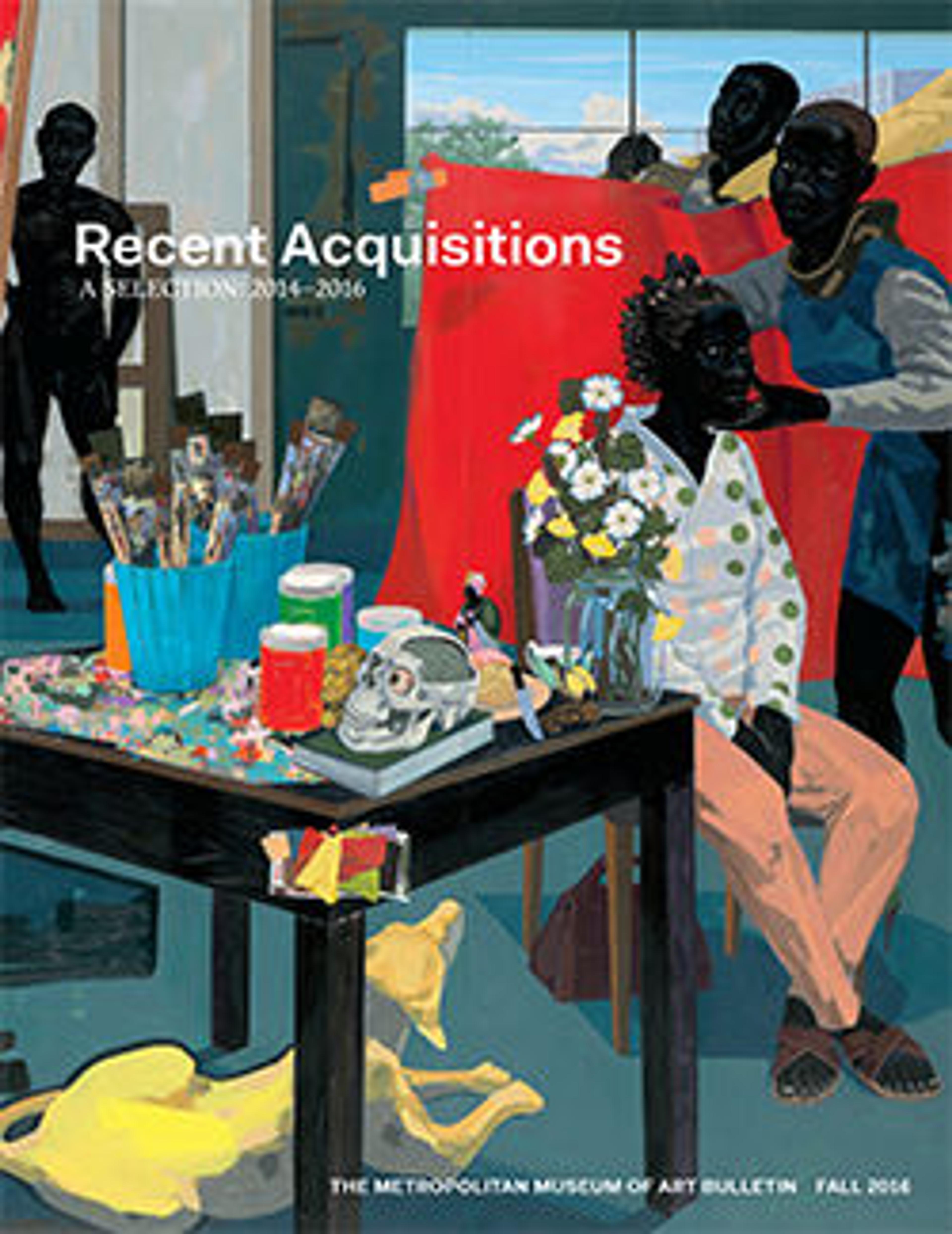The Virgin and Child Attended by Angels
The Virgin Mary and infant Jesus, seated on a floral carpet, are honored with an offering of a plate of fruit, visible in the foreground, consistent with the Hindu devotional practice of prasad (offering). They are attended by three angels, one bearing a gold censer and another with a Chinese-style blue-and-white porcelain bowl decorated with geese. Their feathery bodies and faces resemble those of the peris, or fairies, of Indo-Islamic painting. This hybridity of style and cultural reference is a hallmark of Mughal painting at the turn of the sixteenth century, when European influences in subject matter and technique were being absorbed by court artists such as Manohar. The artist used a tinted drawing method known as nimqalam (half-pen), to create this delicate image.
Artwork Details
- Title:The Virgin and Child Attended by Angels
- Artist:Attributed to Manohar (active ca. 1582–1624)
- Period:Mughal period (1526–1858)
- Date:ca 1600
- Culture:Islamic
- Medium:Brown and blue ink with gold on paper
- Dimensions:Page: H. 12 5/8 in. (32.1 cm)
W. 9 3/16 in. (23.3 cm)
Drawing: H. 6 3/16 in. (15.7 cm)
W. 3 5/16 in. (8.4 cm) - Classification:Paintings
- Credit Line:Gift of Steven Kossak, The Kronos Collections, 2015
- Object Number:2015.785
- Curatorial Department: Asian Art
More Artwork
Research Resources
The Met provides unparalleled resources for research and welcomes an international community of students and scholars. The Met's Open Access API is where creators and researchers can connect to the The Met collection. Open Access data and public domain images are available for unrestricted commercial and noncommercial use without permission or fee.
To request images under copyright and other restrictions, please use this Image Request form.
Feedback
We continue to research and examine historical and cultural context for objects in The Met collection. If you have comments or questions about this object record, please contact us using the form below. The Museum looks forward to receiving your comments.
